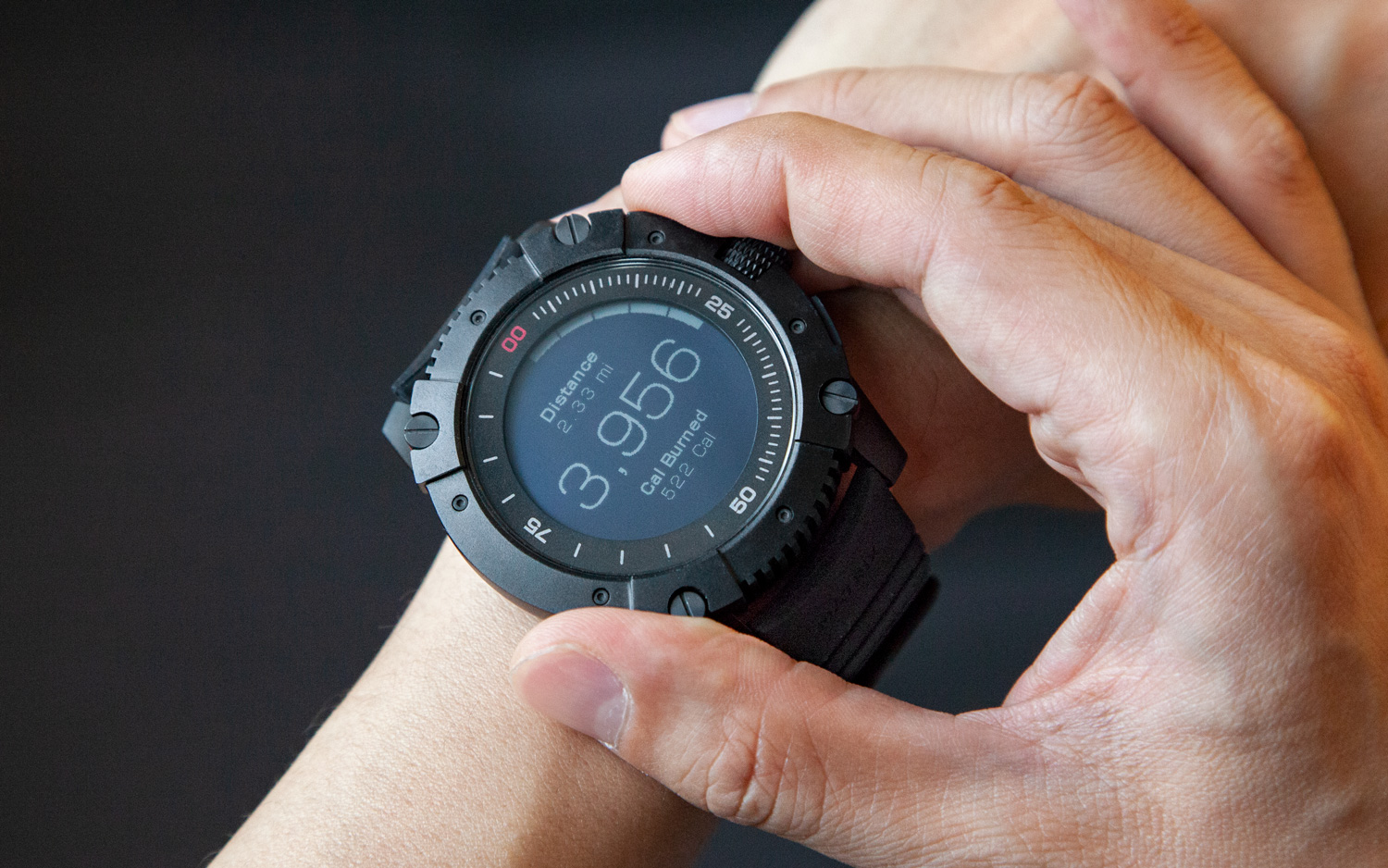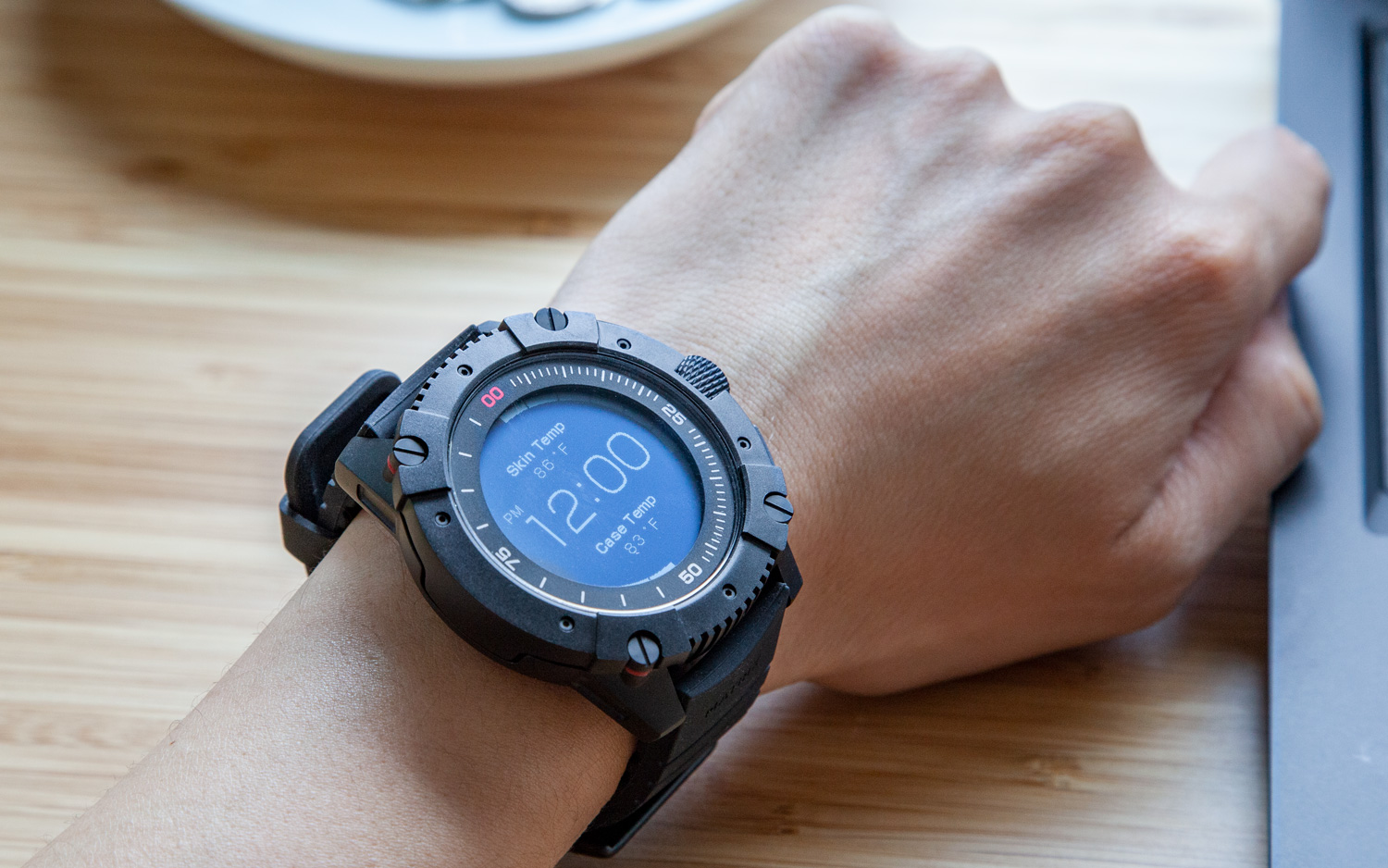Tom's Guide Verdict
While its smartwatch functions are limited, the PowerWatch X never needs charging.
Pros
- +
Never needs charging
- +
Waterproof
Cons
- -
Expensive for the features you get
- -
Large
Why you can trust Tom's Guide
I think smartwatches hold a lot of promise, but there's a reason why I don't own one yet. When I've used one, I too often forgot to charge it at night, leaving me with a useless hunk of metal halfway through the next day.
That's why the Matrix PowerWatch X is so intriguing: It's a watch that never needs charging. I wore this $279 watch for about a week, and, while its smartwatch features are rudimentary, the technology inside it could change not only smartwatches but also mobile devices as we know them.
Design
This is not a device for petite wrists. The PowerWatch X has a hefty 50-millimeter case that's more than half an inch thick, and its design — screws along the outer rim, grooves cut into the case between its lugs and a matte-black design — is decidedly industrial. A digital crown is on the right, flanked by two buttons: The top button switches between screens and the bottom one selects items.

The PowerWatch X's design is functional: The fins along the side are meant to help dissipate heat so that the watch can generate electricity more efficiently.
As smartwatches go, the PowerWatch X is pretty basic. The screen is black with white letters and numbers (no color here), and it only has an accelerometer to measure your steps and track sleep. Although the PowerWatch pairs with your phone to deliver notifications, there's no GPS, heart-rate monitor or NFC.

The PowerWatch X doesn't just look tough, it is also water-resistant to 200 meters (about 650 feet), though it can't track swimming.
The company also sells the PowerWatch ($199), which is a slightly smaller 46mm but lacks notifications and is water-resistant to only 50 meters (165 feet).
Get instant access to breaking news, the hottest reviews, great deals and helpful tips.
How It Works
The PowerWatch X takes advantage of a property called the Seebeck effect, a condition in which differences in temperature between two materials create electricity. The watch uses a thermoelectric generator to harness the power created by the difference in temperature between your skin and the top of the watch case.
MORE: Best Fitness Trackers and Watches - Reviews and ...
To be sure, this technology is in its early stages, and the PowerWatch X only generates enough electricity to power a black-and-white screen and a fairly rudimentary step counter. You can forget about color LCDs, GPS and LTE; they draw too much power.
Performance
Unlike every other smartwatch I've tested, there's no battery meter on the PowerWatch X. Heck, there's no wireless charger, USB port or anything else like that, either.

Instead, a Real Time Display power meter shows how much energy you're generating by filling in white bars around the circumference of the screen. Turning the crown shows you the temperature of your skin and the temperature of the case. When you take the watch off, it goes into a sleep mode to conserve power.
The main screen shows the time and date; the Daily Activity screen shows how far you've walked, how many steps you've taken and how many calories you've burned. Because it measures your skin temperature, Matrix claims that the PowerWatch can more accurately measure burned calories than other fitness trackers.

Running Mode shows your distance (as measured by the watch's accelerometer) and elapsed time. After that, there's a screen for a Stop Watch and Settings. The watch also tracks sleep, but it's far too bulky to wear comfortably while you're sleeping.
When a notification arrived — whether it was a call, email, text message or Instagram alert — the watch buzzed and displayed either the source of the notification or who was sending it. However, there's no way to read the entirety of, say, a text message, nor is there a way to set which notifications you'll receive.
MORE: Do Sleep Tracking Devices Really Work?
The dashboard on the PowerWatch X's app shows you your hours of sleep, number of steps, distance traveled and calories burned (and also can show weekly summaries), but as of this time, there's no way to sync the data with other fitness apps.
Bottom Line
I wore the PowerWatch X for nearly a week, and it was great that I never had to worry about charging it overnight. It just kept going and going, and I'm really interested to see how this technology develops as it becomes more efficient.
Would I buy the PowerWatch X? Well, $279 is a lot to pay for a watch whose greatest attribute is that you never need to plug it in. Fossil's Q Control, for example, has a color touch screen and does far more for the same price; the same could be said for the original Apple Watch, which costs even less.
Then again, either of those watches will barely make it through two days before needing to be recharged. That's something you'll never have to worry about with the PowerWatch X, and for some people, that may be enough.
Credit: Tom's Guide

Michael A. Prospero is the U.S. Editor-in-Chief for Tom’s Guide. He oversees all evergreen content and oversees the Homes, Smart Home, and Fitness/Wearables categories for the site. In his spare time, he also tests out the latest drones, electric scooters, and smart home gadgets, such as video doorbells. Before his tenure at Tom's Guide, he was the Reviews Editor for Laptop Magazine, a reporter at Fast Company, the Times of Trenton, and, many eons back, an intern at George magazine. He received his undergraduate degree from Boston College, where he worked on the campus newspaper The Heights, and then attended the Columbia University school of Journalism. When he’s not testing out the latest running watch, electric scooter, or skiing or training for a marathon, he’s probably using the latest sous vide machine, smoker, or pizza oven, to the delight — or chagrin — of his family.
-
theblaqman So the author basically writes that he doesn't know how to use a smartwatch so he'd rather spend $279 on a watch that isn't smart because he doesn't have to charge it. And I guess he like's women's watches so he considers this too big. Great. lol. All I could think is this guy needs a $1 watch from the dollar store and to replace his computer with a pad and penReply -
Brad_53 What's the big deal with charging daily? I put my watch on the charger at night while I shower and get ready for bed. Once finished, I take it off and it's at 100%.Reply
